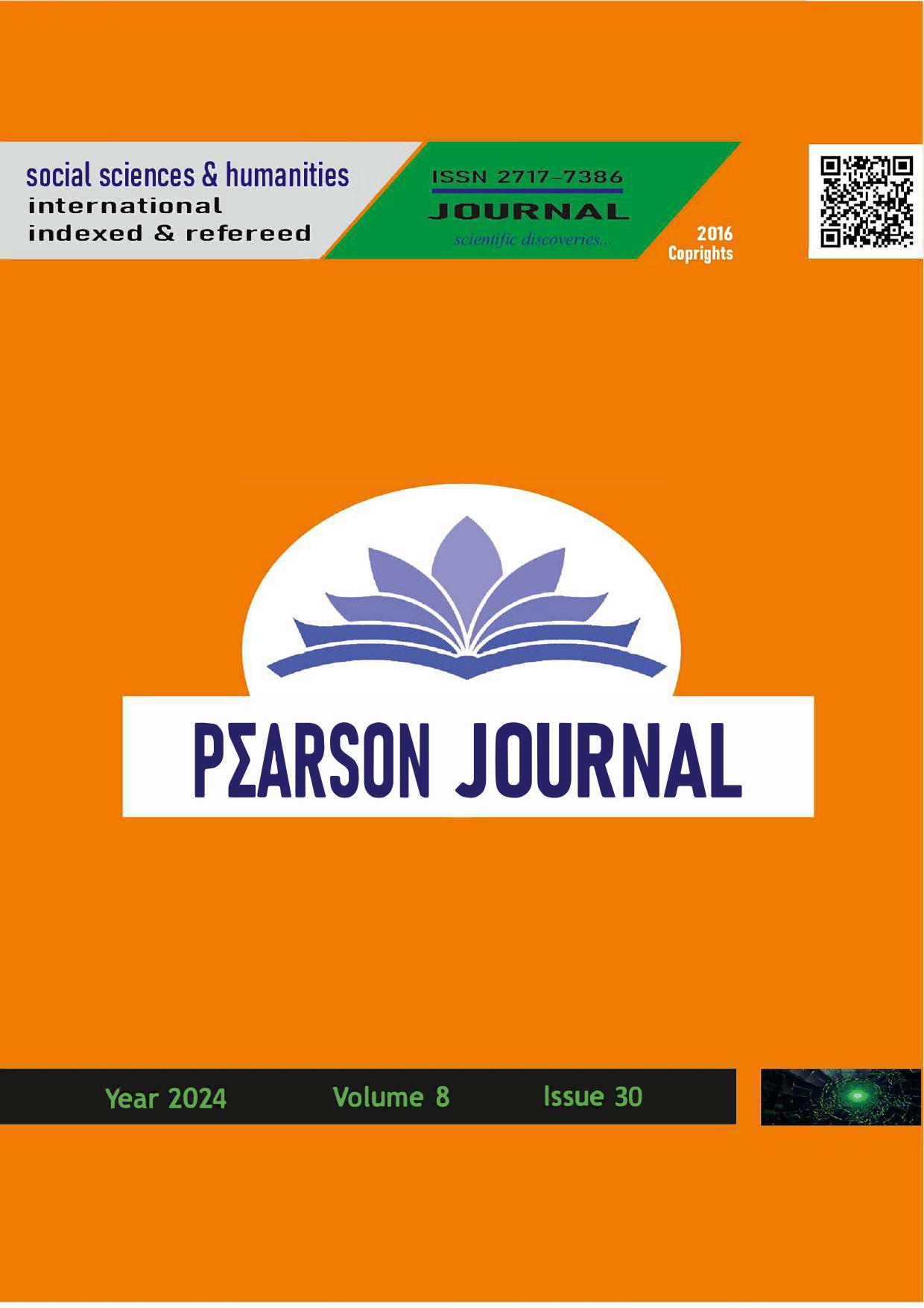İltizam İn The Financıal Structure Of The Ottoman Empire
DOI:
https://doi.org/10.5281/zenodo.14998225Keywords:
İltizam, Ottoman Empire, TaxAbstract
The transfer of a portion of state revenues to individuals for a certain fee is called iltizam. The iltizam system was put into practice in the Ottoman Empire instead of the timar system. The transition to the iltizam system was influenced by the economic and social transformations experienced in the world. The idea that this system, the application areas of which were increased due to the cash needs of the budget, would have many positive aspects is dominant. In particular, the fact that the money would be received from the tax farmers immediately or in a short period of time, that the money would not be affected by inflation and economic fluctuations due to the immediate receipt of the money, and that there was no obligation to bear the transaction cost of collecting taxes were important reference points in the transition to the iltizam system. However, over time, the fact that the tax farmers demanded high amounts of taxes from taxpayers in order to maximize their profits, and the transition to the malikâne system and the extension of the rights of the tax farmers from 1-3 years to the period they survived revealed the sides of the system on behalf of the people and the state. However, the possibility that the agreement signed with the tax farmer could be broken at any moment and given to a tax farmer who made a higher offer strengthened the ambition of the tax farmer who won the tender in the first place and this situation harmed the subjects. In this context, when the budget revenues and expenditures of the Ottoman Empire in the 16th and 17th centuries are examined, it is seen that the budget revenues did not increase as much as desired and that serious budget deficits occurred together with the increasing budget expenditures.
References
Allen, R. C. (2022). Küresel Ekonomi Tarihi. (H. K. Cimitoğlu, Çev.) İstanbul: Türkiye İş Bankası Kültür Yayınları.
Arıkan, Z., & Gürbüz, S. (2021). Geçmişten Günümüze Belli Başlı Vergi Tahsil Yöntemleri. Ed: H. Ay, Düşüncede ve Uygulamada Maliye Tarihi (s. 159-182). Ankara: Nobel Akademik Yayıncılık.
Ay, H. (2016). Tarihi Mali Sistemler ve Osmanlı Maliyesi. İzmir: Albi Yayıncılık.
Batmaz, E. (1996). İltizam Sisteminin XVIII. Yüzyıldaki Boyutları. Tarih Araştırmaları Dergisi, 18(29), 39-50. doi:https://doi.org/10.1501/Tarar_0000000103
Bozpınar, C. (2022). XIX. Yüzyıl Bursa İpek Sektörü: Fiskalizm İlkesi Bağlamında Bir Değerlendirme. Afyon Kocatepe Üniversitesi Sosyal Bilimler Dergisi, 24(1), 201-212. https://dergipark.org.tr/tr/download/article-file/1540773
Buluş, A. (2010). Vergi Toplamanın Özerkleştirilmesinin Vergi Toplamanın Etkinliğine Katkısı: İltizam Sistemi ile Bir Mukayase. Kocaeli Üniversitesi Sosyal Bilimler Dergisi (19), 81-120. https://dergipark.org.tr/en/pub/kosbed/issue/25701/271206
Cezar, Y. (1986). Osmanlı Maliyesinde Bunalım ve Değişim Dönemi / XVIII. yy dan Tanzimat'a Mali Tarih. İstanbul: Alan Yayıncılık. https://www.sayistay.gov.tr/files /925_Bolum1_compressed.pdf
Çakmak, C. (2023). Iltizam. In The Palgrave Encyclopedia of Islamic Finance and Economics. Springer International Publishing, 1-5. https://link.springer.com /referenceworkentry/ 10.1007/978-3-030-93703-4_150-1
Çelik, M. (2022). XVIII. Yüzyılda Devlet ve Toplum İlişkisine Bir Örnek: Adana Sancağı Örneğinde İltizam Sisteminin Yeni Yöneticileri. Ankara Üniversitesi Dil ve Tarih-Coğrafya Fakültesi Dergisi, 62(1), 630-665. https://dergipark.org.tr/en/download/article-file/2211137
Eğilmez, M. (2022). Tarihsel Süreç İçerisinde Dünya Ekonomisi. İstanbul: Remzi Kitabevi.
Genç, M. (2000). İltizam. İslam Ansiklopedisi: https://islamansiklopedisi.org.tr/iltizam--vergi#:~:text=Terim%20olarak%20%E2%80%9C%C3%B6zel%20bir%20%C5%9Fahs%C4%B1n,bedel%20kar%C5%9F%C4%B1l%C4%B1%C4%9F%C4%B1nda%20%C3%BCzerine%20almas%C4%B1%E2%80%9D%20demektir.
Hançerlioğlu, (1999). Ekonomi Sözlüğü. İstanbul: Remzi Kitabevi
İnalcık, H. (1959). İslam Arazi ve Vergi Sisteminin Teşekkülü ve Osmanlı Devrindeki Şekillerle Mukayesesi. İslâm İlimleri Enstitüsü Dergisi (1), 29-46. https://isamveri.org/pdfdrg/D00004/1959_1/1959_1_INALCIKH.pdf
İnalcık, H. (1965). Belgeler II / Adâletnâmeler. Ankara: Türk Tarih Kurumu Basımevi. https://belgeler.gov.tr/tam-metin-pdf/96/tur
İnalcık, H. (2017). Osmanlı İmparatorluğu’nun Ekonomik ve Sosyal Tarihi – I / 1300-1600. İstanbul: Türkiye İş Bankası Yayınları.
Kara, M. T. (2021). Osmanlı Fetva Literatürü Çerçevesinde İltizam Uygulamasının Fıkhî Tahlili. İstanbul: İstanbul Üniversitesi Sosyal Bilimler Enstitüsü Temel İslam Bilimleri Anabilim Dalı Yüksek Lisans Tezi.
Karal, E. Z. (1964). Gülhane Hatt-ı Hümâyununda Batının Etkisi, Türk Tarih Kurumu Belleten, XXVIII (112), 581-601.
https://isamveri.org/pdfsbv/D00137/1964_112/1964_112_ KARALEZ.pdf
Kuyucak, H. A. (1939). Para ve Banka, C. I. İstanbul: İstanbul Maarif Matbaası.
Ma, J. (2003). New Public Management in Early Modern Period: Lessons from Tax Farming History. Administrative Theory & Praxis, 25(4), 435-456. https://www.jstor.org/stable/25610628?seq=1
Orbay, K. (2022). İltizam Sistemi. Tübitak Bilim ve Toplum Başkanlığı Popüler Bilim Yayınları: https://ansiklopedi.tubitak.gov.tr/ansiklopedi/iltizam_sistemi#:~:text=Osmanl%C4
%B1%20%C4%B0mparatorlu%C4%9Fu'nda%20iltizam%20y%C3%B6nteminin,daha%20yayg%C4%B1n%20%C5%9Fekilde%20tercih%20edilmi%C5%9Ftir
Pamuk, Ş. (2023a). Osmanlı-Türkiye İktisadî Tarihi 1500-1914. İstanbul: İletişim Yayınları.
Pamuk, Ş. (2023b). Osmanlı İmparatorluğu'nda Paranın Tarihi. İstanbul: Türkiye İş Bankası Yayınları.
Rakıcı, C., & Polat, S. (2016). Verginin Tarihi Gelişimi ve Geçmişte Uygulanan Bazı İlginç Vergi Konuları. Ed: A. R. Gökbunar, & A. Uğur, Sümerlerden Türkiye Cumhuriyeti'ne Maliye Tarihi (s. 17-37). İstanbul: Beta Basım Yayım.
Şener, A. (2021). Tanzimat Dönemi Osmanlı Vergi Hukuk, İstanbul: Alfa Basım Yayım Dağıtım
Tabakoğlu, A. (1985). XVII ve XVIII Yüzyıl Osmanlı Bütçeleri. İstanbul Üniversitesi İktisat Fakültesi Mecmuası, 41, 389-414.
https://dergipark.org.tr/en/download/article-file/8348
Tabakoğlu, A. (2016). Osmanlı Mali Tarihi. İstanbul: Dergâh Yayınları.
Tulga, D. (2013). Dünya Tarihi. İstanbul: NTV Yayınları.
Uzun, M. C., & Afşar, B. (2019). Osmanlı Ekonomisinin Temel Unsurlarının Ekonomik Yaklaşımlar Çerçevesinde Değerlendirilmesi. Karatay Sosyal Araştırmalar Dergisi(3), 54-93. https://dergipark.org.tr/en/download/article-file/1147122
Ünal, M. A. (1988). XVII. Yüzyıl Başlarında Harput Mukataatına Ait Bir İcmal Muhasebe Defteri. Ondokuz Mayıs Üniversitesi Eğitim Fakültesi Dergisi (3), 93-107.
Ünal, M. A. (1991). XVI. Yüzyıl Sonlarında Bir İltizam Sözleşmesi. Tarih İncelemeleri Dergisi (6), 59-77. https://dergipark.org.tr/tr/download/article-file/58262
Yardımcı, M. E., Oflaz, E., & Menecler, O. (2020). Tarihsel Süreçte İltizam Sisteminin Sosyo Ekonomik Etkileri; Devlet Erkinin Kişisel Kullanımı “Mültezim”. Düzce İktisat Dergisi, 1(1), 57-68. https://duzceiktisatdergisi.com.tr/files/22/manuscript/manuscript_1919/d%C4%B0d-1919-manuscript-113415.pdf
Yörük, D. (2019). XVI. Yüzyılın Ortalarında İltizam Sisteminin Yaygınlığı: Lârende Kazası Örneği. Selçuk Üniversitesi Türkiyat Araştırmaları Dergisi (47), 217-238. https://dergipark.org.tr/tr/download/article-file/1494388
Downloads
Published
How to Cite
Issue
Section
License
Copyright (c) 2024 PEARSON JOURNAL

This work is licensed under a Creative Commons Attribution 4.0 International License.



